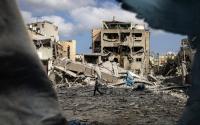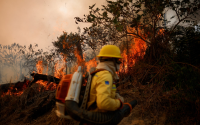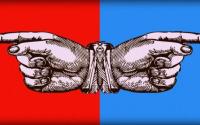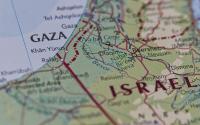 Many US papers chose a picture of the aftermath of the attack |
22 December 2003
Newspapers across the country sense that this attack may mark a turning point in the battle with insurgents in Iraq.
The Los Angeles Daily News calls it the "bloodiest day" and the California Modesto Bee labels Tuesday the "darkest day for Iraq".
Beneath pictures of an injured US soldier being carried on a stretcher, Illinois' State Journal Register calls it the "massacre in Mosul", while both the Herald News of New Jersey and the Lima News of Ohio echo a feeling of outrage by branding it the "mess hall massacre".
Many papers have chosen to highlight a photograph showing shafts of sunlight illuminating the devastated mess room, where abandoned food trays and debris can be seen among the shadows.
'Carnage'
Two New York publications devote their entire front page to another picture.
Both the Times Herald Record and the Daily News show two soldiers helping an injured colleague away from the scene of the attack. The Daily News headline reads: "Carnage at lunch".
Washington's Sun sees the attack as an affront to US strength and a watershed moment for US involvement in Iraq, with a story headlined: "Striking at US resolve".
An editorial in the New York Times agrees, predicting that Iraq will now inevitably engulf President Bush's second term, despite his best aims to shift his focus towards domestic issues.
"The war is creating a nasty array of problems for President Bush as he gears up for an ambitious second term," it says, adding that a lack of a clear exit strategy appears to be one of the major concerns for US citizens.
Intelligence
The attack, the newspaper says, raises serious questions about the US military's ability to create the secure environment needed for the elections.
"Mr Bush faces fundamental questions about his strategy for bringing stability to Iraq [...] How can the United States - with the help of Iraqi security forces whose performance is uneven at best - assure the safety of Iraqis who go to the polls on 30 January when it cannot keep its own troops safe on their own base?" Richard W. Stevenson asks.
The Washington Post worries that the attack marks a change in attitude from the insurgents, making troops more vulnerable than ever.
"That difference appears to reflect both the persistence of the insurgency and its growing sophistication, as experts noted that it seemed to be based on precise intelligence."
As time passes, the paper notes, "insurgents tend to sharpen their tactics".






